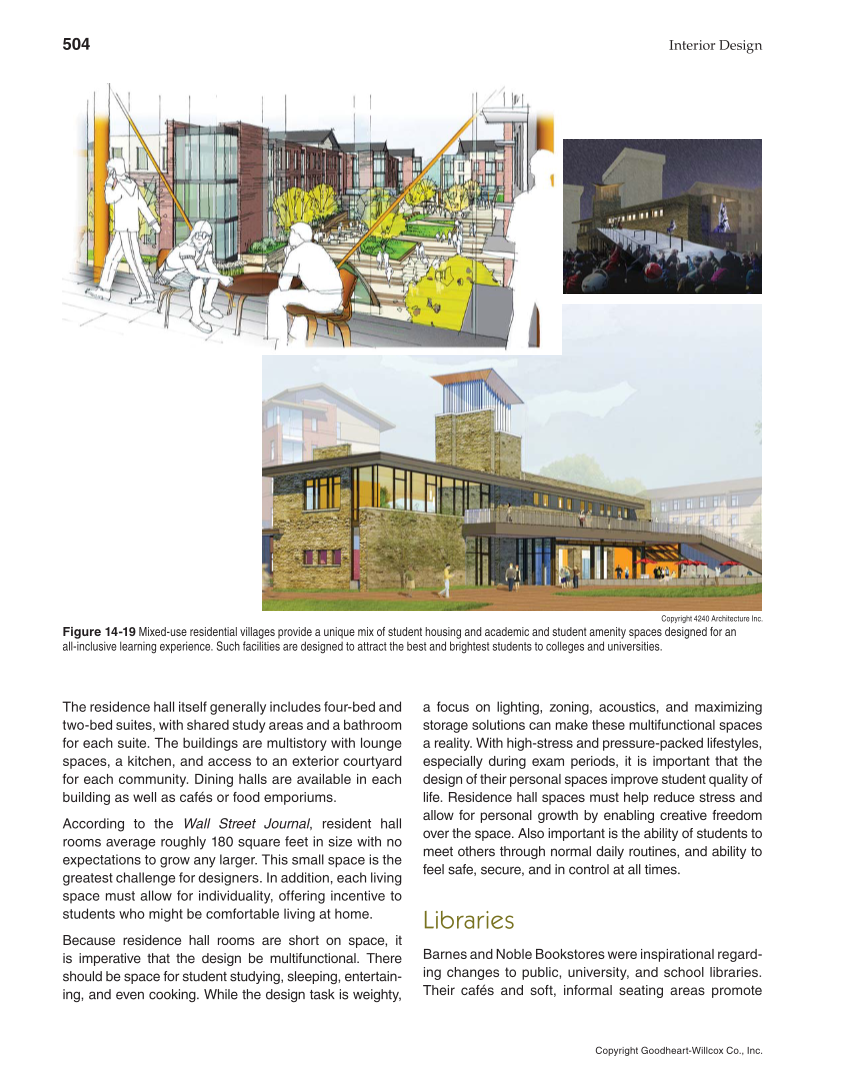504 Interior Design Copyright Goodheart-Willcox Co., Inc. The residence hall itself generally includes four-bed and two-bed suites, with shared study areas and a bathroom for each suite. The buildings are multistory with lounge spaces, a kitchen, and access to an exterior courtyard for each community. Dining halls are available in each building as well as cafés or food emporiums. According to the Wall Street Journal, resident hall rooms average roughly 180 square feet in size with no expectations to grow any larger. This small space is the greatest challenge for designers. In addition, each living space must allow for individuality, offering incentive to students who might be comfortable living at home. Because residence hall rooms are short on space, it is imperative that the design be multifunctional. There should be space for student studying, sleeping, entertain- ing, and even cooking. While the design task is weighty, a focus on lighting, zoning, acoustics, and maximizing storage solutions can make these multifunctional spaces a reality. With high-stress and pressure-packed lifestyles, especially during exam periods, it is important that the design of their personal spaces improve student quality of life. Residence hall spaces must help reduce stress and allow for personal growth by enabling creative freedom over the space. Also important is the ability of students to meet others through normal daily routines, and ability to feel safe, secure, and in control at all times. Libraries Barnes and Noble Bookstores were inspirational regard- ing changes to public, university, and school libraries. Their cafés and soft, informal seating areas promote Copyright 4240 Architecture Inc. Figure 14-19 Mixed-use residential villages provide a unique mix of student housing and academic and student amenity spaces designed for an all-inclusive learning experience. Such facilities are designed to attract the best and brightest students to colleges and universities.
